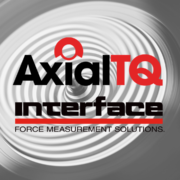EV Battery Testing Solutions Utilize Interface Mini Load Cells
 Automotive components undergo rigorous testing to meet regulatory standards, guarantee performance, and ensure consumer safety. These components continually require investment in innovation to meet the expressed governmental, consumer and commercial use requirements.
Automotive components undergo rigorous testing to meet regulatory standards, guarantee performance, and ensure consumer safety. These components continually require investment in innovation to meet the expressed governmental, consumer and commercial use requirements.
One of the vehicle components that is undergoing intense change is the battery. The market is heavily focused on increasing mileage use and life, which includes the shift from single-use lithium batteries to lithium-ion batteries which are rechargeable.
These customer sentiments are noticeable in the growing global electric vehicle (EV) and hybrid electric vehicle (HEV) demands for sustainable and longer-lasting battery solutions. Customer satisfaction and commercial applications are closely intertwined with a vehicle’s ability to travel longer distances without refueling or charging. The demands and changes drive robust test and measurement programs to bring new battery models and designs to market.
In 2021, it is estimated the EV battery market exceeded 38% of total battery sales. As technology continues to improve the lifecycle and reducing battery costs, Precedence Research estimates 32% CAGR through 2030. This translated to $46B in the US alone of market share, while Asia Pacific is leading the production of EVs and overall demand for the EV batteries. Based on global adoption of electric vehicles, supported by government initiatives and an intense focus on reduced carbon emissions, the EV battery market is expected to continue expanding around the world.
The testing of batteries is growing in complexity with the increase in number of cells, modern designs, materials, cycles, installation, vehicle models, certifications and charging equipment to name a few. Battery simulation and real battery integration testing are two examples of commonly used T&M programs used to validate battery adaptability and use requirements. In battery testing, accuracy and quality of the measurement devices are vital. The following are the most common battery types today:
- Lithium-ion Battery
- Lead-Acid Battery
- Sodium-ion Battery
- Nickel-Metal Hydride Battery
- Others
Due to the market shift to EVs, the lithium-ion battery is the number one battery type today. The domination of the lithium-ion battery exceeded all other battery types in 2021. Manufacturers of EVs prefer partnering with OEMs of newer model Li-ion batteries because they are lighter in weight and have higher energy density. The following details one of many Interface solutions offered to automotive component and battery manufacturers.
 Electric Vehicle Battery Monitoring
Electric Vehicle Battery Monitoring
The EV battery manufacturer required a system to monitor their lithium-ion batteries. Normally, lithium-ion batteries are measured through voltage and current measurements or (ICV) to analyze and monitor the battery life. In consultation with the design and testing engineers, Interface recommended a solution that required installing the LBM Compression Load Button Load Cell in between two garolite end plates, and measuring the force due to cell swelling or expansion. Instead of monitoring through voltage (ICV), this method is based on measured force (ICF). To monitor the testing, the load cell was paired with the 9330 Battery Powered High Speed Data Logging Indicator. This instrumentation solution provides the ability to display, record and log the force measurement results with supplied software. To review the results and complete application note, go here.
Interface has long partnered with auto manufacturers and suppliers of various parts and components to provide a large range of automotive industry test and measurement solutions. This includes sensors and instrumentation solutions for the development, testing and performance monitoring of all types of batteries, with growing interest for lithium-ion battery testing.
Interface will be discussing this and other force measurement solutions at the upcoming Auto Test Expo in Europe. Join us in Stuttgart or contact our application engineers to collaborate on a testing solution that works for your next project.
Additional Automotive Industry Resources
Interface Automotive Force Measurement Solutions
Driving Force in Automotive Applications
Test and Measurement for Electric Vehicles
The Future of Automotive is Electric
AxialTQ Technical White Paper Details Comparative Testing
Automotive Window Pinch Force Testing App Note








